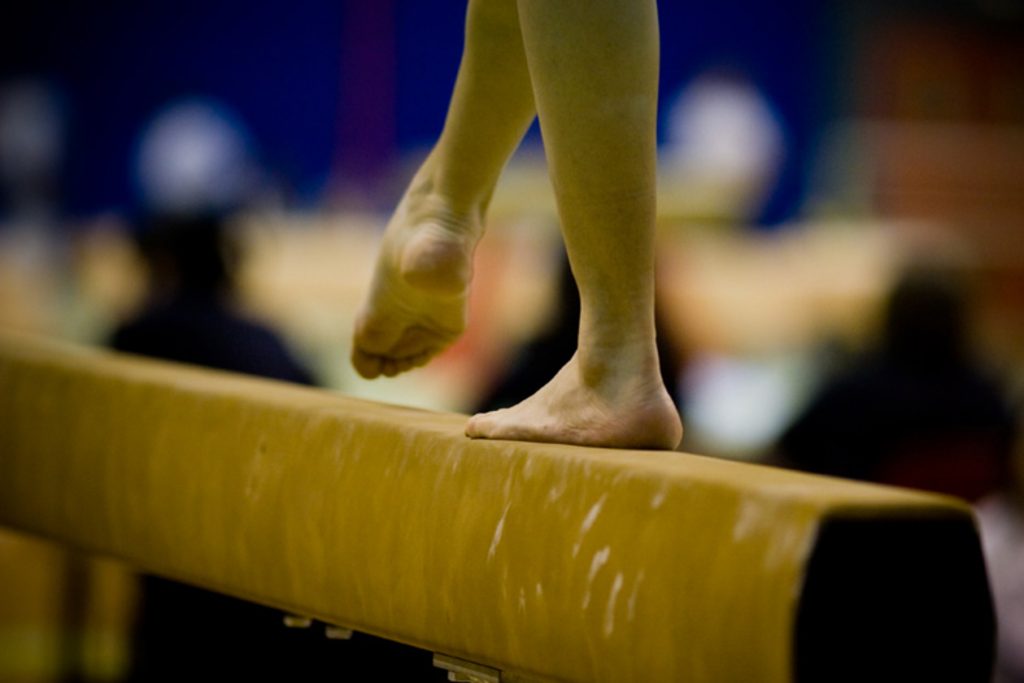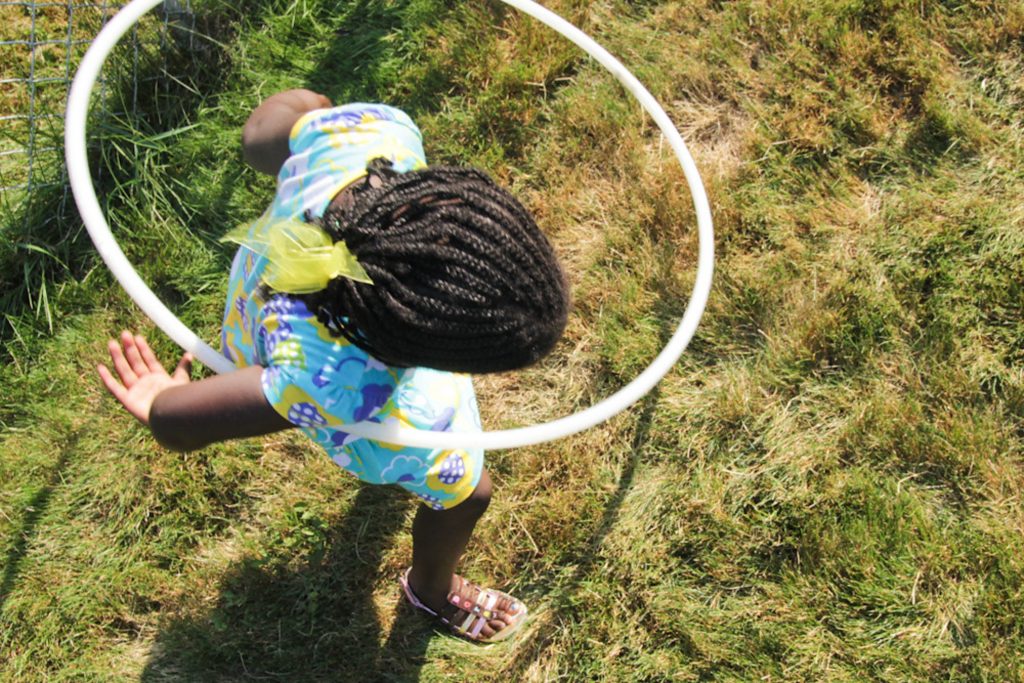Engaging your preschooler in gross motor activities can be done indoors or out. The toys they currently have, as well as a bit of masking tape, can efficiently serve to set up places for your child to work on moving their larger muscle groups and building stronger balance.
Balance Beam
Tape out a long, straight stretch on the floor of a carpeted room, then encourage your child to use their imagination and their core muscles to stay on the tightrope or balance beam. At each end, help your child to stand flat-footed with their toes pointing straight ahead, close their eyes and reach as high as they can stretch to feel their core muscles engage.

Balloon Badminton
If it’s not too windy, air up a couple of balloons and get out the badminton rackets. Use the balloons to play a simple game of badminton, with every player striving to keep the balloon aloft. You can switch things up by adding a counting game and seeing if your child can bounce the balloon off the racket at least five times. Build up from there.
Jump the Brook
Using tape or jump rope, create two parallel lines on the floor. You can put down a blue piece of cloth between the lines, or create your own brook as a separate art project. Encourage your child to hop over the “water” you’ve created. If your child can’t manage the distance, have everyone take off their shoes, roll up their pants, and hop in and out of the brook.
Walking with Variations
If you’re ready for some sunshine, take your toddler on a walk with variations. Once you’ve walked a stretch of sidewalk, turn around and skip back the same distance so you can check for any unevenness or other hazards. If you’re on a walking path, keep going. You can add a counting game to this exercise. Different variations include hopping, galloping, and double galloping.
Hula Hoops
Hula hoops can serve a wide variety of exercises and fun activities. If your child is big enough, they can traditionally use a hoop and work on their core muscles. Another option is to use the hoop like a jump rope. Finally, a hula hoop can be laid on the ground to serve as a hopping barrier, a place to practice one-footed hopping, or a place to stand for Simon Says. For families with multiple children, the chance to stand on your own in a hula hoop can reduce conflict created by too much togetherness.

Listening Games
Listening games are a great way to help your child move their body and to pay attention. Both as a leader and as a competitor, a game of Simon Says can help you monitor what moves are easy for your child, where they may have difficulty, and any instructions they may not understand. You may find that you need to work on left or right, or that your child responds visually rather than to spoken commands. By leading a game of Simon Says, you can help your child improve their balance as well as their cognitive skills.
Conclusion
Getting your little one moving is critical to building strength and coordination. It can be challenging to determine what activities are easy for them and where they struggle. By turning these activities into family fun games, you can monitor any weakness in their large muscle groups and help them build confidence in their body.
